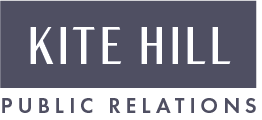This piece was originally published on CommsPro.Biz.
Agility has become a buzzword du jour. We’ve seen more courses in agile development, agile leadership and agile marketing pop up. When applied to PR, agility is more frequently used to describe a mindset as opposed to process. Given today’s ever-changing media environment, PR professionals can create more efficiencies and pivot PR programs quickly by adopting an agile PR process for campaign execution and management.
Applying the principles of agile development to PR can be more easily facilitated by the use of project management solutions, which help you plan, organize and manage programs. A recent report found that the online project management market was expected to grow to $5.4 billion by the end of 2022 and increase at a healthy 13.1% from 2022 to 2032 and, interestingly, adoption of these platforms by PR professionals is on the rise as many agencies and in-house communications teams look to improve their commstech stacks. remote work and project management tools like Monday.com have become commonplace. These tools enable teams to break down large projects into smaller, more manageable tasks and track progress, resources and deadlines.
Here are some ways that you can leverage project management tools to transform your existing approach to PR planning into an agile process.
Focus on Near Term Planning
The problem with traditional PR planning is just that: it’s traditional. The industry has changed dramatically in just the last five to 10 years and yet, PR planning methods haven’t caught up. One of the most popular, traditional models of PR planning is the waterfall plan, which is often reflected in a Gantt Chart. While this method is clear, concise and orderly it also requires the team to map out every single step of their entire plan. Each step is dependent on the previous one and therefore, progress is stagnant unless every step is effectively completed in sequential order.
This type of planning has further drawbacks. Firstly, it minimizes the importance of measurement. If a team has to plan each step 90 days in advance, and doesn’t have much flexibility when it comes to changing those steps, measurement becomes obsolete. Collecting data in real time on campaign performance is meaningless when PR strategies can’t be adapted to feedback. And we’ve learned that measurement is anything but meaningless – it is the way the PR industry can show its value.
The inability to react to data coming through measurement is directly related to the fact that traditional planning does not leave room for a necessity in the PR industry: agility and the ability to pivot quickly. The news cycle is changing every single day, sometimes multiple times a day. Clients are constantly changing priorities. All account activity is fluid and PR professionals need to be nimble.
Break Overarching Program Objectives into Manageable, Movable Tasks
When we think of agility, we typically think of the ability to move quickly and easily. But there is another definition – one that is centered around a method of project management that breaks tasks down into short phases of work. That is the type of agility that needs to be implemented across the PR industry.
An agile workflow embraces individuals and interactions rather than tools and processes. Teams must prioritize collaboration and the ability to respond to change in a way that is productive – not chaotic or rash. The key point of agile development is a focus on iterative development and incremental delivery, rather than a linear workflow where only finished products are publicized. Don’t work in isolated bits towards far out delivery dates but rather, work together and deliver small pieces frequently. This allows teams to bring finished products to market and gather feedback to improve the next iteration. Then, the cycle repeats.
How can teams implement agile development into their strategies? Through developing a workflow that puts agility at the center of focus.
Create Focused “Sprints” of Activity
PR pros have to move away from traditional thinking and encourage clients to do the same. Sit down and have an open conversation with both your clients and your full team. Convey the need for agility and explain that PR programs cannot be linear. They need room to grow and evolve as the news cycle and priorities shift. Education is a key part in embracing an agile model.
The next step is to work with your teams to develop a model that puts agility and performance at the center of all activity. Our team has embraced an agile workflow that entails two-week periods of time, called “sprints”, that are broken into even smaller, repeatable steps which enable us to act faster, identify roadblocks quicker and make our PR programs stronger. Develop a plan that caters best for your team and the work they are doing for their clients.
Evaluate and Iterate to Achieve Program Goals
Finally, a critical part of agility is evaluation. When embracing a new planning method, take the time to evaluate what worked and what didn’t. Allow yourself and your team to identify areas of improvement and discuss how these can be adjusted moving forward to create a more efficient and effective system.
For how quickly the PR industry moves on a daily basis, it’s surprising that our planning methods are still stuck in the past. As the industry moves into a new era of media, PR pros need to embrace agility and agile planning in order to keep up with the changing world around them. Agility will ultimately enable PR programs to adapt quickly and implement feedback in real time, leading to better results and increased performance.
- Tiffany Guarnaccia, CEO and Founder

